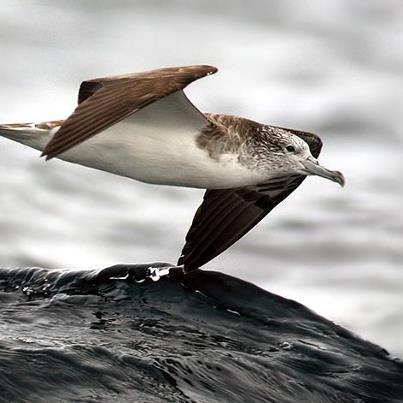Alice Carravieri (Centre d’Études Biologiques de Chizé, Université de La Rochelle, France) and colleagues have published in the journal Physiological and Biochemical Zoology Ecological and Evolutionary Approaches on physiological experiments conducted on free-living Streaked Shearwaters Calonectris leucomelas.
The paper’s abstract follows:
“Heart rate (HR) and heart rate variability (HRV) provide noninvasive measures of the relative activity of the parasympathetic nervous system (PNS), which promotes self-maintenance and restoration, and the sympathetic nervous system (SNS), which prepares an animal for danger. The PNS decreases HR, whereas the SNS increases HR. The PNS and SNS also contribute to oscillations in heartbeat intervals at different frequencies, producing HRV. HRV promotes resilience and adjustment capacity in the organism to intrinsic and extrinsic changes. Measuring HRV can reveal the condition and emotional state of animals, including aspects of their stress physiology. Until now, the functioning of the PNS and SNS and their relationship with other physiological systems have been studied almost exclusively in humans. In this study, we tested their influence on HR and HRV for the first time in a wild-caught seabird, the streaked shearwater (Calonectris leucomelas). We analyzed electrocardiograms collected from birds carrying externally attached HR loggers and that received injections that pharmacologically blocked the PNS, the SNS, or both, as well as those that received a saline (sham) injection or no injection (control). The PNS strongly dominated modulation of HR and also HRV across all frequencies, whereas the SNS contributed only slightly to low-frequency oscillations. The saline injection itself acted as a stressor, causing a dramatic drop in PNS activity in HRV and an increase in HR, though PNS activity continued to dominate even during acute stress. Dominant PNS activity is expected for long-lived species, which should employ physiological strategies that minimize somatic deterioration coming from stress.”

Streaked Shearwater
Reference:
Carravieri, A., Müller, M.S., Yoda, K., Hayama, S. & Yamamoto, M. 2016. Dominant parasympathetic modulation of heart rate and heart rate variability in a wild-caught seabird. Physiological and Biochemical Zoology Ecological and Evolutionary Approaches DOI: 10.1086/686894.
John Cooper, ACAP Information Officer, 01 July 2016

 English
English  Français
Français  Español
Español